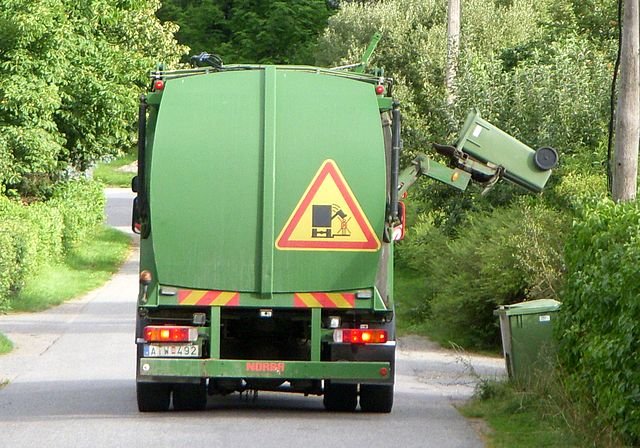Waste management is one of the most serious environmental challenges faced by the tiny Gulf nation of Qatar. mainly on account of high population growth rate, urbanization, industrial growth and economic expansion. The country has one of the highest per capita waste generation rates worldwide of 1.8 kg per day.
Qatar produces more than 2.5 million tons of municipal solid waste each year. Solid waste stream is mainly comprised of organic materials (around 60 percent) while the rest of the waste steam is made up of recyclables like glass, paper, metals and plastics.
Municipalities are responsible for solid waste collection in Qatar both directly, using their own logistics, and indirectly through private sector contract. Waste collection and transport is carried out by a large fleet of trucks that collect MSW from thousands of collection points scattered across the country.
The predominant method of solid waste disposal in Qatar is landfilling. The collected is discharged at various transfer stations from where it is sent to the landfill. There are three landfills in Qatar; Umm Al-Afai for bulky and domestic waste, Rawda Rashed for construction and demolition waste, and Al-Krana for sewage wastes. However, the method of waste disposal by landfill is not a practical solution for a country like Qatar where land availability is limited.
Solid Waste Management Strategy
According to Qatar National Development Strategy 2011-2016, the country will adopt a multi-faceted strategy to contain the levels of waste generated by households, commercial sites and industry – and to promote recycling initiatives. Qatar intends to adopt integrated waste hierarchy of prevention, reduction, reuse, recycling, energy recovery, and as a last option, landfill disposal.
A comprehensive solid waste management plan is being implemented which will coordinate responsibilities, activities and planning for managing wastes from households, industry and commercial establishments, and construction industry. The target is to recycle 38 percent of solid waste, up from the current 8 percent, and reduce domestic per capita waste generation.
Five waste transfer stations have been setup in South Doha, West Doha, Industrial Area, Dukhan and Al-Khor to reduce the quantity of waste going to Umm Al-Afai landfill. These transfer stations are equipped with material recovery facility for separating recyclables such as glass, paper, aluminium and plastic.
Domestic Solid Waste Management Centre
One of the most promising developments has been the creation of Domestic Solid Waste Management Centre (DSWMC) at Mesaieed. This centre is designed to maximize recovery of resources and energy from waste by installing state-of-the-art technologies for separation, pre-processing, mechanical and organic recycling, and waste-to-energy and composting technologies.
At its full capacity, it treats 1550 tons of waste per day, and is expected to generate enough power for in-house requirements, and supply a surplus of 34.4 MW to the national grid.
Future Outlook
While commendable steps are being undertaken to handle solid waste, the Government should also strive to enforce strict waste management legislation and create mass awareness about 4Rs of waste management viz. Reduce, Reuse, Recycle and Recovery. Legislation are necessary to ensure compliance, failure of which will attract a penalty with spot checks by the Government body entrusted with its implementation.
Improvement in curbside collection mechanism and establishment of material recovery facilities and recycling centres may also encourage public participation in waste management initiatives. When the Qatar National Development Strategy 2011-2016 was conceived, the solid waste management facility plant at Mesaieed was a laudable solution, but its capacity has been overwhelmed by the time the project was completed. Qatar needs a handful of such centers to tackle the burgeoning garbage disposal problem.


























